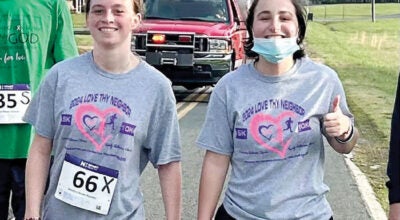Ester Marsh: It’s important to hydrate
Published 12:00 am Saturday, September 9, 2023
I will share about proper hydration again, since the temperatures are still so high. However, that doesn’t mean you don’t need to be concerned about hydration when the temperatures drop. Lean tissue, muscles and organs consist of more than 70 percent water so your body has to have fluids to function well and stay alive. A friend of mine told me the other week that I should put the urine color charts back up in our bathrooms because your urine gives you great feedback. The darker the color, the more dehydrated you are. You can check out urine color charts to see what color urine means what. These are possible meanings: clear — good hydration, over hydration or mild dehydration; pale yellow — good hydration or mild dehydration; bright yellow — mild or moderate dehydration or taking vitamin supplements; orange/amber — moderate to severe dehydration; tea-colored — severe dehydration.
The best way not to get dehydrated is to prevent it. Did you know that when you are thirsty you are already dehydrated? An easy way to make sure you are hydrated is to take half of your body weight, and those are the ounces of fluid (preferable water) you consume. Typically one bottle of water is around 20 ounces of water. Dehydration occurs when the amount of water leaving the body is greater than the amount taken in. You lose water by sweating (to cool the body), simply by breathing (you can really see it during cold weather)
The American College of Sports Medicine recommendations to meet your fluid needs while exercising:
• Drink as much as needed to match sweat loss. Approximately 20 ounces of fluids should be consumed for every pound of body weight lost during exercise.
• Do not rely on your thirst as a reason to drink. As I mentioned above, the thirst sensation will only occur after 1 to 2 liters already are lost. So you are already dehydrated.
• Sweat rates are often 1-2 liters per hour which is difficult to consume enough fluids to match the losses. You should learn to drink water on a fixed time interval.
• Fluids should be cool and readily available.
Most people are all about weight loss. If you lose two pounds during your workout, that means you need to consume 40 ounces of fluids. Water weight loss is not true weight loss. By exercising, eating correctly and hydrating as needed, the true weight loss will come.
Signs of dehydration and what to do:
• Of course being thirsty, you are already 40 ounces behind. Drink cool, noncarbonated, non-caffeinated fluids in intervals. Gulping it down at once will increase gastrointestinal distress.
• Dehydration with loss of energy and performance — drink carbohydrate- and electrolyte-containing sports drinks.
• Dehydration with muscle cramps — Immediately stop exercising and massage the cramping muscle while consuming a sports drink that contains sodium which may relieve the cramp.
The majority of fluids to keep your body hydrated should come from plain water. Unless you exercise excessively for over an hour and sweat heavily, you do not need many, or any at all, sports drinks.
Staying hydrated during exercise has multiple benefits:
• Less pronounced increase in heart rate
• Less pronounced increase in core body temperature.
• Improved cardiac stroke volume and cardiac output (heart is pumping stronger and in greater volumes with one beat)
• Improve skin blood flow, enabling better sweat rates and improved cooling.
• Maintenance of better blood volume
• A reduction of net muscle glycogen usage which improves endurance.
Have your water readily available, slowly increase your volume each day until you reach your needed intake. Don’t drink tons right before you go to bed! And remember, even when the temperatures eventually will drop, you still need to hydrate!
Ester H. Marsh is director of healthy living at the J.F. Hurley YMCA.



